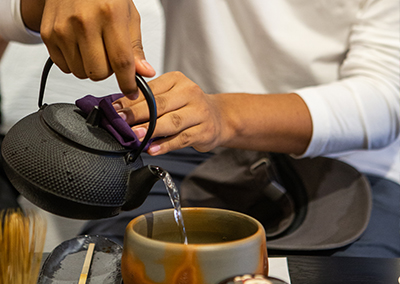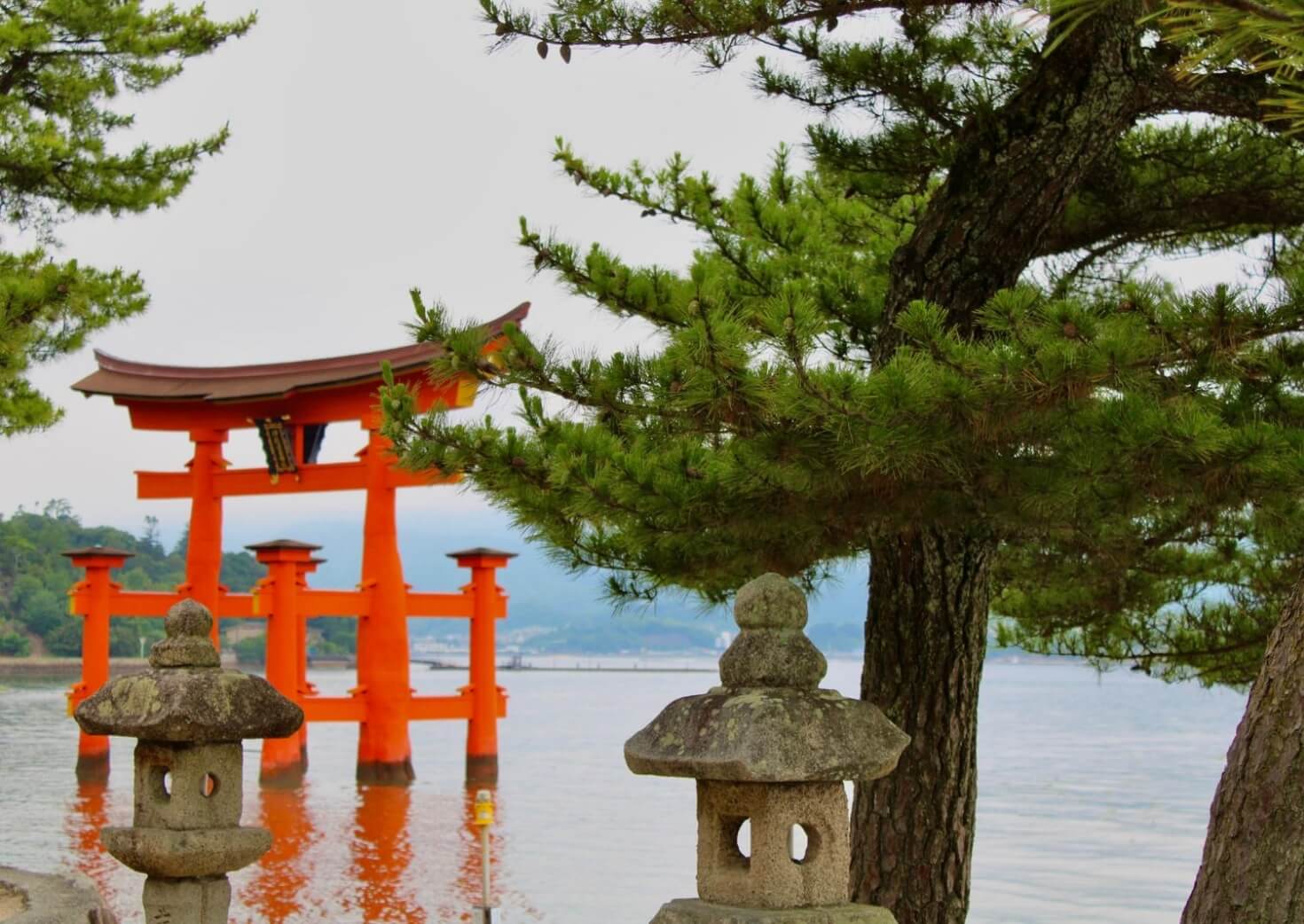Smithsonian Student Travel | Japan
Travel to Japan on this high school summer program and dive into the country’s fascinating history and culture, visiting legendary cities like Kyoto and Hiroshima, as well as small towns off the beaten path like Ozu and Matsuyama. Explore how ancient traditions and cultural practices intersect with modern values and challenges in a rapidly changing world. Experience the traditions of Shinto, Zen, and Shingon Buddhism at important temples and shrines. Learn the history behind castles, sprawling gardens and cultural sites. Visit the Hokusai Museum to delve into ukiyo-e woodblock printing, then learn techniques for its modern pop-culture inheritance: manga and anime, with a drawing lesson from a professional artist. With a focus on history and how it informs the modern, take a journey through time, from Edo-era Samurai battles to the Shibuya Scramble, and experience the culture that made Japan what it is today.




Highlights
- See the iconic “floating” torii gate on Miyajima Island
- Eat the freshest sushi in the world at a Tokyo fish market
- Photograph the bamboo gardens of Arashiyama
- Take an anime drawing class from a renowned manga artist
Itinerary
This itinerary represents our plan for the program. However, we may implement changes if we identify opportunities to improve the experience, to take advantage of unexpected events, or to accommodate local schedule changes.
Departure • Travel Day • Meet your student travel group and one of your trip leaders in San Francisco and fly together to Tokyo, Japan.
Osaka & Nara • 3 days • Begin in the urban hub of the western region of Honshu. Experience Osaka, also known as “The Nation’s Kitchen” and its vibrant food scene. Spend the first evening in Osaka getting to know your group and leaders during an in-depth orientation, then dive into your program themes. Traverse Osaka’s famous Dotonbori street full of animated signs and famous neon for Japan’s major brands like Glico and Meiji. Try delicious street foods like takoyaki, balls of dough filled with octopus and covered with a sweet sauce. Visit nearby Nara while here, and feed the domesticated deer in Nara park and visit the first imperial capital, one of the world’s oldest wooden structures. Nara is also home to Japan’s oldest and most famous Giant Buddha, or Daibutsu, statue. Visit the ‘retro town’ of Shinsekai and take a ride to the top of Tsutenkaku Tower.
Kyoto • 4 days • Next, travel to Kyoto, once the capital of Japan and one of the oldest municipalities on the island. Kyoto is a wealth of historical and cultural treasures, as well as a bustling modern city with a thriving information technology and electronics industry—including the headquarters of Nintendo. Photograph the golden pavilion, Kinkakuji, and classical shrines and temples like Kyomizudera, Ryoanji and Ninnaiji. Try some traditional Kyoto specialty foods like shimesaba oshizushi, watch a maiko or bunraku performance, and experience a traditional chadō tea ceremony just a short distance from Uji, the birthplace of Mattcha. Hike the iconic row of 1,000 orange torii gates leading to Fushimi Inari Taisha and explore Nijo Castle, Nishiki Market and other iconic places. Your expert will join you here to help provide context and the fascinating stories behind these incredible sights and experiences.
Hiroshima & Miyajima Island • 3 days • Hiroshima, the first city in the world to sustain a nuclear bomb attack, has been widely renewed and is now celebrated as a City of Peace, where many international visitors come to discuss social issues. Spend days with your Smithsonian expert learning about the social and political climate that lead to Japan’s imperial and militarist pre-war history. Visit the museum and “bomb dome” structure dedicated to the victims of the atomic bomb for a moving first-hand view of the devastation that officially ended the Empire of Japan. For your second day, enjoy a lighter theme on a day trip to Miyajima, a small island off the coast with a world-famous “floating” torii gate. Visit the entrance to the Itsukushima Shrine, first built in the 12th century, then visit the nearby Museum of History and Folklore, full of artifacts dating back to the 1800s.
Ozu & Matsuyama • 3 days • From Hiroshima, take a ferry across the inland Seto Sea to the province of Ehime, the most populated corner of the island of Shikoku. At Matsuyama, experience Dogo Onsen, a sprawling complex of natural hot spring baths that is credited as one of the primary inspirations for the bath house setting in Studio Ghibli’s movie, Spirited Away. Ehime is also home to some of Japan’s best and most impressive castles. Get a glimpse of Samurai life from the inside as you gaze out from the ramparts and experience a taste of Japanese life in the Edo era.
Tokyo • 4 days • Fly from Matsuyama to Tokyo for your final four days in the world’s biggest metropolis. Discover innovative approaches to urban planning, technical applications, and cultural evolution in the place writer Noah Smith recently proclaimed is now “the greatest city in the world.” During the Meiji Restoration in the late 19th century, Japan’s capital was moved here from Kyoto, and Tokyo is now a sprawling city where skyscrapers and neon lights exist alongside ancient temples and historic botanical gardens. Emerge at Shinjuku Station, the world’s busiest railway station, and explore local shops. Stroll the grounds of the Imperial Palace and see treasures from Japan’s history at the National Museum. Visit the new Toyosu fish market, the largest in the world and recently relocated from Tsukiji, where you can taste the freshest sashimi possible. From thrift stores tucked away in Shimo-Kitazawa to the vintage markets of Yanaka Ginza, explore the immense variety of Tokyo neighborhoods. Along the way, connect with locals to learn Taiko drumming, learn how Sumo wrestlers train, take a drawing lesson from a professional manga artist and more. On the final night, bid sayonara to Japan with a luxurious meal and celebration.
Return • Travel Day • Fly from Osaka to San Francisco with your group and a trip leader, then continue on to your final destination.
Smithsonian Student Travel Experts
A Smithsonian Student Travel Expert will join the group for four or five days of the itinerary. A professional in their field, they will tie in their knowledge and experiences with the themes of the program and share their insights and passion for the region during talks and informal conversations throughout their time with the students. Meet next summer’s expert below.





What to Expect
Physical Activity • This is a physically active summer travel program. You can expect to ride local and intercity trains, walk the neon-lit streets of Tokyo while working on projects, try taiko drumming, and do other fun activities over the course of the trip that may be new and unique. You do not need to be at peak fitness to participate, but it is important that you have a desire to be physically active, are comfortable walking moderate to long distances, and that you are excited about trying all activities.
Accommodations • The group stays at Western-style hotels for a majority of the program, but one stop you’ll stay on tatami floors and futon mattresses.
Climate • Japan has a very dynamic climate, with significant changes by season and region. Summers in Japan are typically hot and humid, with temperatures ranging from 70–90°F (21–32°C), with heat especially noted in Tokyo, Kyoto, and other metropolitan areas.
Meals • Most breakfast meals will be taken at our accommodations, while lunch and dinner will typically be eaten out.
Cuisine • Japanese food has become famous worldwide in recent years, and for good reason. Dishes like sushi, udon, and miso soup are now widely enjoyed. The Japanese have also adapted and changed other Asian dishes in unique ways, such as ramen and gyoza from China, Korean barbecue, and curry from India. Japanese people are known for their love of “umami” which is a “deep richness of flavor.” Primarily these foods get umami from a traditional mix of fish broth (dashi), kombu seaweed, and mirin, a sweet cooking wine. Today, most Western foods like pasta and sandwiches are also available in modern Japan, though they are often altered to suit the Japanese palate.
Enroll in two programs & save $1,000!
$800 tuition discount + no second application fee
